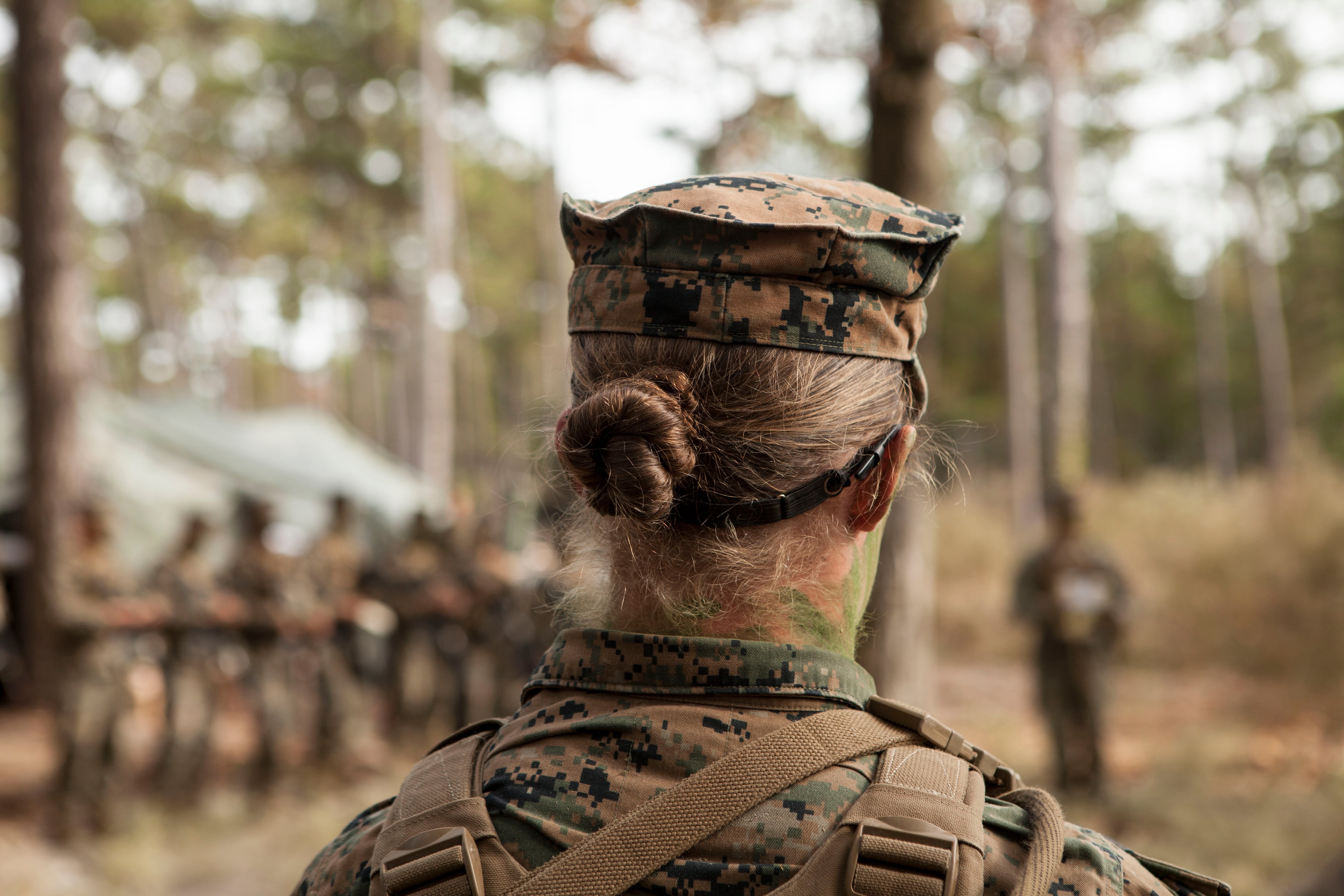The first female infantry Marines will share fighting holes and tents with male Marines during field exercises.
"We're not changing any of our tactical posture or breaking unit cohesion or adjusting anything to accommodate mixed genders while we're operating in a field environment replicating tactical conditions," said Maj. Charles Anklam III, executive officer for 1st Battalion, 8th Marines at Camp Lejeune, North Carolina.
On Jan. 5, the battalion received three female infantry Marines: a rifleman, machine gunner and mortar Marine. Whenever the Marines are in the field, they will live, train and fight with their unit, Anklam told Marine Corps Times.
"Our female Marines will find themselves side-by-side their male counterparts in a fighting hole or in their living conditions for the execution of field or deployed duties," he said in a Jan. 20 interview.
When in their barracks, all of the female Marines have their own rooms, which include their own shower and bathroom, Anklam said. The battalion has had to make some adjustments in buildings where both women and men now work, he said.
"Typically you'll find within an infantry battalion like in this building, we've got a downstairs and an upstairs head facility," he said. "We've been able to allocate one of those for the use of female members and then the other for male members."
So far, the battalion has not experienced any unexpected challenges to integrating the women into the unit, said Lt. Col. Reginald McClam, battalion commander.
Before the women arrived, the battalion had several discussions with officers and noncommissioned officers about how the female infantry Marines would become part of the unit, McClam said.
"We placed a continued emphasis on the corporal through first lieutenant because that's the small unit leadership, the middle management, that really is critical in carrying out my commander's intent and the policy and guidelines of Headquarters Marine Corps," he said.
Capt. Katharine Gibbons-Neff is the battalion's logistics officer, who is also serving as part of the unit's female leadership cadre. While the cadre's mission is to be a sounding board for battalion and company leaders on personnel issues, their interactions with the three women will be limited, she said.
"The existing female leadership is not in the immediate chain of command for the female infantry Marines," Gibbons-Neff said. "We don't expect or outright condone that the female Marines go outside of their chain command to seek counsel solely on the basis of gender – unless they've been specifically directed to do so by their chain of command."
Gibbons-Neff and the other female leaders have been invaluable in providing a female perspective of what it's like to arrive at a unit that has never had women before, McClam said.
McClam stressed that the battalion's mission has not changed and neither have the standards that all Marines have to meet, both men and women.
"This is what I told the staff," McClam said, "I joined the Marine Corps to lead Marines and sailors. I didn't take an oath of office that said I was going to lead male Marines or female Marines or male sailors or female sailors. I said I would lead Marines."




